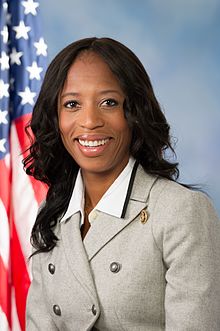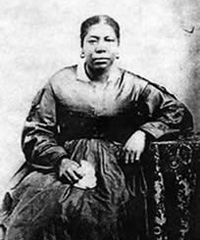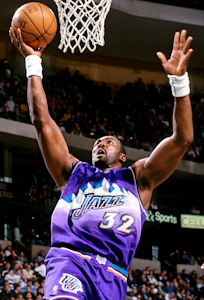
Utah is a landlocked state in the Mountain West subregion of the Western United States. It borders Colorado to its east, Wyoming to its northeast, Idaho to its north, Arizona to its south, and Nevada to its west. Utah also touches a corner of New Mexico in the southeast. Of the fifty U.S. states, Utah is the 13th-largest by area; with a population over three million, it is the 30th-most-populous and 11th-least-densely populated. Urban development is mostly concentrated in two areas: the Wasatch Front in the north-central part of the state, which is home to roughly two-thirds of the population and includes the capital city, Salt Lake City; and Washington County in the southwest, with more than 180,000 residents. Most of the western half of Utah lies in the Great Basin.

Duchesne County is a county in the northeast part of the U.S. state of Utah. As of the 2020 United States Census, the population was 19,596. Its county seat is Duchesne, and the largest city is Roosevelt.

Bountiful is a city in Davis County, Utah. As of the 2020 census, the city population was 45,762, an eight percent increase over the 2010 figure of 42,552. The city grew rapidly during the suburb growth of the late 1940s, 1950s, and 1960s and was Davis County's largest city until 1985, when it was surpassed by Layton. Bountiful is Utah's 18th-largest city.

American Fork is a city in north-central Utah County, Utah, United States, at the foot of Mount Timpanogos in the Wasatch Range, north from Utah Lake. This city is thirty-two miles southeast of Salt Lake City. It is part of the Provo–Orem Metropolitan Statistical Area. The population was 33,337 in 2020. The city has grown rapidly since the 1970s.

Spanish Fork is a city in Utah County, Utah, United States. It is part of the Provo–Orem Metropolitan Statistical Area. The 2020 census reported a population of 42,602. Spanish Fork, Utah is the 20th largest city in Utah based on official 2017 estimates from the US Census Bureau.

Elijah Abel, or Able or Ables was one of the earliest African-American members of the Church of Jesus Christ of Latter-day Saints, and was the church's first African-American elder and Seventy. Abel was predominantly of Scottish and English descent and appears to have been the first, and one of the few, black members in the early history of the church to have received Priesthood ordination, later becoming the faith's first black missionary. Abel did not have his ordination revoked when the LDS Church officially announced its now-obsolete restrictions on Priesthood ordination, but was denied a chance to receive his temple endowment by third church president John Taylor. As a skilled carpenter, Abel often committed his services to the building of LDS temples and chapels. He died in 1884 after serving a mission to Cincinnati, Ohio, his last of three total missions for the church.
During the history of the Latter Day Saint movement, the relationship between Black people and Mormonism has included enslavement, exclusion and inclusion, and official and unofficial discrimination. Black people have been involved with the Latter Day Saint movement since its inception in the 1830s. Their experiences have varied widely, depending on the denomination within Mormonism and the time of their involvement. From the mid-1800s to 1978, Mormonism's largest denomination – the Church of Jesus Christ of Latter-day Saints – barred Black women and men from participating in the ordinances of its temples necessary for the highest level of salvation, prevented most men of Black African descent from being ordained into the church's lay, all-male priesthood, supported racial segregation in its communities and schools, taught that righteous Black people would be made white after death, and opposed interracial marriage. The temple and priesthood racial restrictions were lifted by church leaders in 1978. In 2013, the church disavowed its previous teachings on race for the first time.

Black Canadians, also known as Afro-Canadians, are Canadians of African or Afro-Caribbean descent. The majority of Black Canadians are of Afro-Caribbean and African origin, though the Black Canadian population also consists of African Americans in Canada and their descendants.
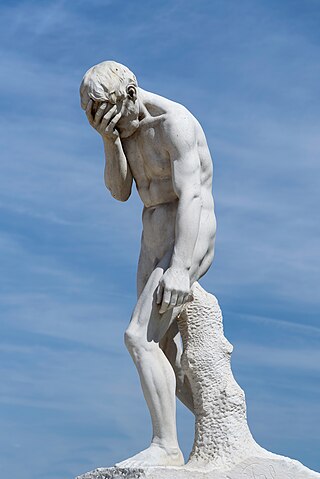
The curse of Cain and the mark of Cain are phrases that originated in the story of Cain and Abel in the Book of Genesis. In the stories, if someone harmed Cain, the damage would come back sevenfold. Some interpretations view this as a physical mark, whereas other interpretations see the "mark" as a sign, and not as a physical mark on Cain himself. The King James Version of the Bible reads "set a mark upon Cain".
Chief Walkara was a Shoshone leader of the Utah Indians known as the Timpanogo and Sanpete Band. It is not completely clear what cultural group the Utah or Timpanogo Indians belonged to, but they are listed as Shoshone. He had a reputation as a diplomat, horseman and warrior, and a military leader of raiding parties, and in the Wakara War.

The History of Utah is an examination of the human history and social activity within the state of Utah located in the western United States.
Utah is a state in the Mountain state subregion of the Western United States with a population of 3 million people. Originally populated by the Ancestral Puebloans, Ute, Navajo, and Fremont people, Utah has experienced several waves of immigration over its history, leading to a diversity of ethnic and national backgrounds. Historians characterize the post-Indigenous settlement of Utah as having occurred in three major waves, the first between 1850 and 1880, the second between 1880 and 1920. and the third post World War II to the present.

Since Mormonism’s foundation, Black people have been members, however the church placed restrictions on proselytization efforts among Black people. Before 1978, Black membership was small. It has since grown, and in 1997, there were approximately 500,000 Black members of the church, mostly in Africa, Brazil and the Caribbean. Black membership has continued to grow substantially, especially in West Africa, where two temples have been built. By 2018, an estimated 6% of members were Black worldwide. In the United States, approximately 1% of members are Black.
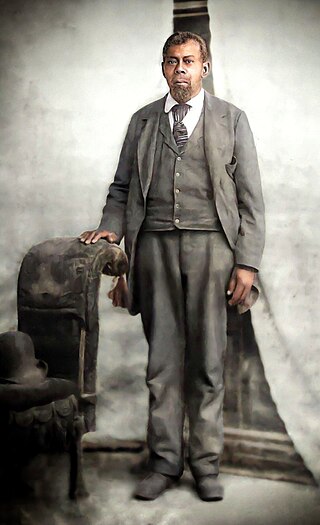
Green Flake was an early African-American member of the Church of Jesus Christ of Latter Day Saints, and was one of the three enslaved African-American Latter-day Saint pioneers who entered the Salt Lake Valley on July 22, 1847. He was born into bondage on a plantation in Anson County, North Carolina. His enslaver, James Flake, took him to Mississippi in the early 1840s. There, James, his wife, and Green joined the Church of Jesus Christ of Latter Day Saints in 1844. The Flakes moved to Nauvoo, Illinois, in 1845. Green Flake received his freedom sometime in the early 1850s and married Martha Morris. Green and Martha had two children together.

The Latter Day Saint movement has had varying and conflicting teachings on slavery. Early converts were initially from the Northern United States and opposed slavery, believing that their opposition was supported by Mormon scripture. After the church base moved to the slave state of Missouri and gained Southern converts, church leaders began to enslave people. New scriptures instructing Latter-Day Saints not to intervene in the lives of the enslaved people were revealed. A few enslavers joined the church, and when they moved to Nauvoo, Illinois, they illegally took their enslaved people with them, even though Illinois was a free state.

Racial segregation of churches in the United States is a pattern of Christian churches maintaining segregated congregations based on race. As of 2001, as many as 87% of Christian churches in the United States were completely made up of only white or African-American parishioners.
Civil rights and Mormonism have been intertwined since the religion's start, with founder Joseph Smith writing on slavery in 1836. Initial Mormon converts were from the north of the United States and opposed slavery. This caused contention in the slave state of Missouri, and the church began distancing itself from abolitionism and justifying slavery based on the Bible. During this time, several slave owners joined the church, and brought their enslaved people with them when they moved to Nauvoo, Illinois. The church adopted scriptures which teach against influencing slaves to be "dissatisfied with their condition" as well as scriptures which teach that "all are alike unto God." As mayor of Nauvoo, Smith prohibited Black people from holding office, joining the Nauvoo Legion, voting or marrying whites; but, as president of the church Black people became members and several Black men were ordained to the priesthood. Also during this time, Smith began his presidential campaign on a platform for the government to buy slaves into freedom over several years. He was killed during his presidential campaign.

The history of slavery in Colorado began centuries before Colorado achieved statehood when Spanish colonists of Santa Fe de Nuevo México (1598–1848) enslaved Native Americans, called Genízaros. Southern Colorado was part of the Spanish territory until 1848. Comanche and Utes raided villages of other indigenous people and enslaved them.
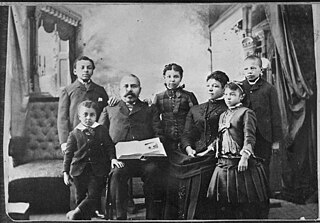
African Americans in Oregon or Black Oregonians are residents of the state of Oregon who are of African American ancestry. In 2017, there were an estimated 91,000 African Americans in Oregon.

Over the past two centuries, the relationship between Native American people and Mormonism has included friendly ties, displacement, battles, slavery, education placement programs, and official and unofficial discrimination. Native American people were historically considered a special group by adherents of the Latter Day Saint movement (Mormons) since they were believed to be the descendants of the Lamanite people described in The Book of Mormon. There is no support from genetic studies and archaeology for the historicity of the Book of Mormon or Middle Eastern origins for any Native American peoples. Today there are many Native American members of Mormon denominations as well as many people who are critical of Mormonism and its teachings and actions around Native American people.
